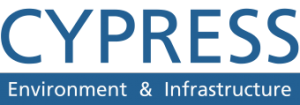[av_two_third first min_height=” vertical_alignment=’av-align-top’ space=” row_boxshadow=” row_boxshadow_color=” row_boxshadow_width=’10’ custom_margin=” margin=’0px’ mobile_breaking=” mobile_column_order=” min_col_height=” padding=” svg_div_top=” svg_div_top_color=’#333333′ svg_div_top_width=’100′ svg_div_top_height=’50’ svg_div_top_max_height=’none’ svg_div_top_flip=” svg_div_top_invert=” svg_div_top_front=” svg_div_top_opacity=” svg_div_top_preview=” svg_div_bottom=” svg_div_bottom_color=’#333333′ svg_div_bottom_width=’100′ svg_div_bottom_height=’50’ svg_div_bottom_max_height=’none’ svg_div_bottom_flip=” svg_div_bottom_invert=” svg_div_bottom_front=” svg_div_bottom_opacity=” svg_div_bottom_preview=” border=” border_style=’solid’ border_color=” radius=” column_boxshadow=” column_boxshadow_color=” column_boxshadow_width=’10’ background=’bg_color’ background_color=” background_gradient_direction=’vertical’ background_gradient_color1=’#000000′ background_gradient_color2=’#ffffff’ background_gradient_color3=” src=” background_position=’top left’ background_repeat=’no-repeat’ highlight=” highlight_size=” animation=” link=” linktarget=” link_hover=” title_attr=” alt_attr=” mobile_display=” mobile_col_pos=’0′ id=” custom_class=” template_class=” aria_label=” av_uid=’av-30ccj5′ sc_version=’1.0′]
[av_textblock textblock_styling_align=” textblock_styling=” textblock_styling_gap=” textblock_styling_mobile=” size=” av-medium-font-size=” av-small-font-size=” av-mini-font-size=” font_color=” color=” id=” custom_class=” template_class=” av_uid=’av-l2p1tx3r’ sc_version=’1.0′ admin_preview_bg=”]
When it comes to construction near a body of water, people often wrestle with the question of whether to build inside or outside the FEMA floodplain.
What is a floodplain?
A floodplain is a location near a body of water which is subject to periodic flooding. Floodplains are designated and mapped by FEMA, the Federal Emergency Management Agency, in coordination with State Floodplain Managers.
So can I develop in a floodplain at all?
This also doesn’t mean that you can’t develop within a floodplain, just that there are more risks to be considered and evaluated. FEMA has multiple options for allowing development within a floodplain, most of which vary based on the specific flood zone you are developing in and the type of development. Along with federal requirements, local floodplain ordinances often go above and beyond FEMA “baseline” requirements.
Map Change or Map Revision?
FEMA classifies development into two different programs, MT-1 request, and MT-2 request. MT-1 requests don’t physically change the Flood Insurance Rate Map. Instead, they provide additional information for flood insurance purposes. This is generally referred to as a map amendment. These are known as Letters of Map Amendment (LOMA’s), Conditional Letters of Map Amendment (CLOMA’s), Letters of Map Revision Based on Fill (LOMR-F’s), and Conditional Letters of Map Revision Based on Fill (CLOMR-F’s). One of the most often used products is a LOMA. This can be done on new construction, or an existing structure that is in a floodplain. A registered professional engineer or professional land surveyor will fill out an elevation certificate. This will be used to determine the height of your finished floor compared to the base flood elevations (BFE). This information can then be used to send to your insurance company to update your flood risk more accurately.
FEMA also allows developers, homeowner associations, local municipalities, and end-users to physically change the flood maps. This is known as an MT-2 request and is generally referred to as a map revision . MT-2 requests consist of either a Conditional Letter of Map Revision (CLOMR) or a Letter of Map Revision (LOMR). A CLOMR is a letter from FEMA before development commenting on whether a proposed project if built as proposed, would meet FEMA requirements. A LOMR is a letter from FEMA officially revising the current flood maps.
Cypress can help
Cypress can help in providing professional services for both programs. We have extensive experience in submitting and reviewing MT-1 and MT-2 requests. Cypress has the engineering and planning staff to:
- analyze floodplain issues on your property using numerical modeling
- determine the best course of action
- assist with floodplain development permit applications
- ensure compliance with FEMA, State and local floodplain management requirements
Our Certified Floodplain Managers and other technical staff are ready to help.
What if my project doesn’t negatively impact the waterway?
There is the potential that the development being proposed does not have an impact on the base flood elevation. This would be considered a no-rise condition and it can often happen on smaller construction projects. If you think that may be the case for your project, Cypress can help provide you with a No-Rise Certification that meets FEMA and local regulations. These no-rise certifications are submitted to the local floodplain administrator to keep with their records. The allowable rise is dictated by two CFR regulations and is dependent upon whether your development is in a floodway or floodplain.
The right to submit a map or model update
Often a project can improve the flood risk along a river or stream. If that’s the case, there is an incentive to submit a map revision and update the maps to reflect the decreased flood risk (i.e., cheaper flood insurance premiums). Ultimately this is a complex problem that requires a constant dialogue between the owner of the project, the local floodplain administrator, and FEMA. Cypress can help bridge the knowledge gap and work towards the most effective outcome.
So what is the true cost of building in a floodplain?
Well, for starters there are a lot more regulatory considerations to navigate through. Cypress has extensive experience in this field and can help you navigate through these hurdles. Design alternatives outside of the floodplain should be explored, but at the end of the day, a true understanding of flood risk is what we strive to provide.
[/av_textblock]
[/av_two_third][av_one_third min_height=” vertical_alignment=’av-align-top’ space=” row_boxshadow=” row_boxshadow_color=” row_boxshadow_width=’10’ custom_margin=” margin=’0px’ mobile_breaking=” mobile_column_order=” min_col_height=” padding=” svg_div_top=” svg_div_top_color=’#333333′ svg_div_top_width=’100′ svg_div_top_height=’50’ svg_div_top_max_height=’none’ svg_div_top_flip=” svg_div_top_invert=” svg_div_top_front=” svg_div_top_opacity=” svg_div_top_preview=” svg_div_bottom=” svg_div_bottom_color=’#333333′ svg_div_bottom_width=’100′ svg_div_bottom_height=’50’ svg_div_bottom_max_height=’none’ svg_div_bottom_flip=” svg_div_bottom_invert=” svg_div_bottom_front=” svg_div_bottom_opacity=” svg_div_bottom_preview=” border=” border_style=’solid’ border_color=” radius=” column_boxshadow=” column_boxshadow_color=” column_boxshadow_width=’10’ background=’bg_color’ background_color=” background_gradient_direction=’vertical’ background_gradient_color1=’#000000′ background_gradient_color2=’#ffffff’ background_gradient_color3=” src=” background_position=’top left’ background_repeat=’no-repeat’ highlight=” highlight_size=” animation=” link=” linktarget=” link_hover=” title_attr=” alt_attr=” mobile_display=” mobile_col_pos=’0′ id=” custom_class=” template_class=” aria_label=” av_uid=’av-2dz3c1′ sc_version=’1.0′]
[av_image src=’https://cypressei.com/wp-content/uploads/2021/01/Auguste-Flood-Model-300×169.gif’ attachment=’4322′ attachment_size=’medium’ copyright=” caption=” image_size=” styling=” align=’center’ font_size=” overlay_opacity=’0.4′ overlay_color=’#000000′ overlay_text_color=’#ffffff’ animation=’no-animation’ hover=” appearance=” link=” target=” title_attr=” alt_attr=” img_scrset=” lazy_loading=’disabled’ id=” custom_class=” template_class=” av_element_hidden_in_editor=’0′ av_uid=’av-l0prtivm’ sc_version=’1.0′ admin_preview_bg=”][/av_image]
[av_image src=’https://cypressei.com/wp-content/uploads/2018/09/20-IMG_1094-e1536270118128-201×300.jpg’ attachment=’3868′ attachment_size=’medium’ copyright=” caption=” image_size=” styling=” align=’center’ font_size=” overlay_opacity=’0.4′ overlay_color=’#000000′ overlay_text_color=’#ffffff’ animation=’no-animation’ hover=” appearance=” link=” target=” title_attr=’Floodplain wetlands’ alt_attr=’Floodplain wetlands’ img_scrset=” lazy_loading=’disabled’ id=” custom_class=” template_class=” av_element_hidden_in_editor=’0′ av_uid=’av-l0prvlxm’ sc_version=’1.0′ admin_preview_bg=”][/av_image]
[/av_one_third]
